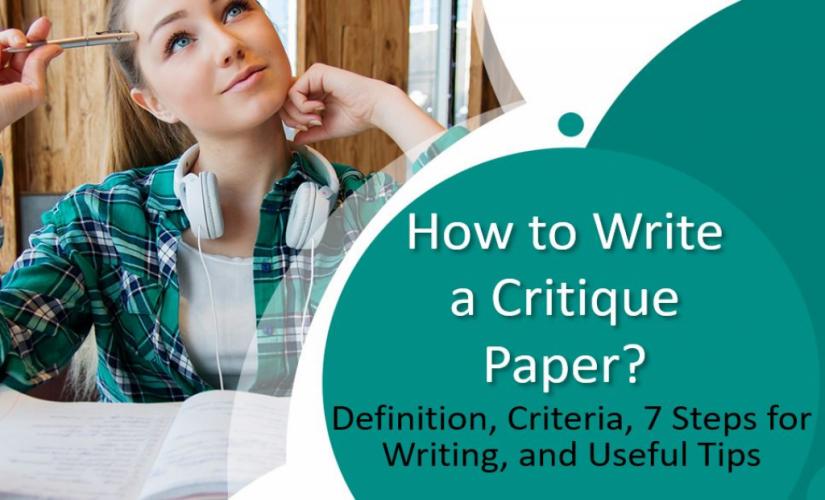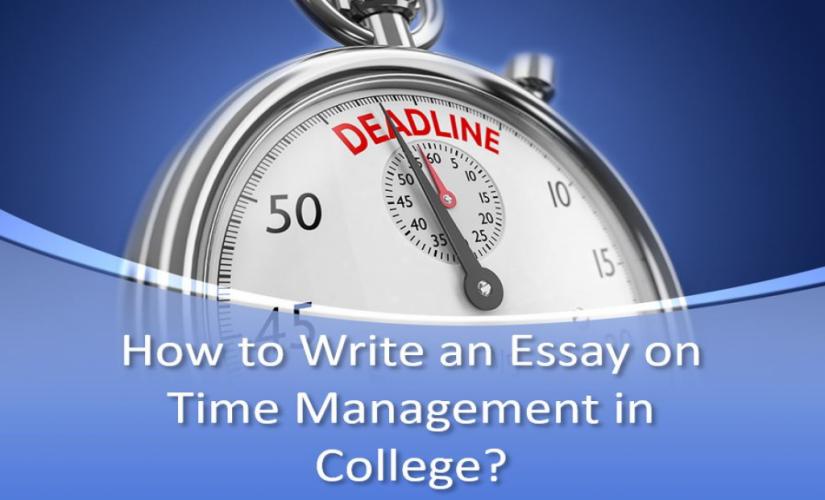Critique papers summarize and judge books, journal articles, movies, and artworks, among other sources. Basically, these essays also include a critical evaluation of the item under reflection. In this case, learners must follow an academic writing style and include different sections, like basic introduction, body, and conclusion paragraphs. Moreover, creating a strong thesis statement in critique essays determines the focus of the entire work, similar to how one would craft an introduction for a rhetorical analysis essay. In turn, the body section must summarize and evaluate the source objectively. Besides, one must avoid biased judgment during the assessment. The closing paragraph makes an informed summary of the main points and arguments. Hence, one may use recommended ways on how to write a critique paper and improve the work under evaluation.
General Rules
Among other types of papers, critique essays contain summaries of books, journal articles, movies, and artworks, among other sources. In particular, critiques use formal rules for academic writing. Students engage in a critical evaluation of the item under consideration. Then, compulsory sections include introduction, body, and conclusion elements. In turn, a persuasive thesis statement at the beginning communicates the primary focus of the written composition. Further on, the body section summarizes and appraises the source. Avoiding biased judgment during the assessment improves the quality of any composition. As a result, the conclusion brings closure to the work and connects to the central claim. However, one may restate the thesis and provide practical recommendations.
Receive personalized assistance from our writers, ensuring your paper is both original and tailored to your needs.
What Is a Critique Paper and Its Definition
According to its definition, a critique paper is a detailed analysis and evaluation of a chosen piece of work, such as a book, article, movie, or artwork. Basically, the main purpose of writing a critique paper is to define the work’s strengths and weaknesses and provide a new and unique writer’s perspective through a well-detailed examination of its content, style, and overall effectiveness (Yeong, 2014). In this case, the 5 parts of a critique paper are an introduction, a summary of a particular source or concept, its critical analysis, an interpretation, and a conclusion. The writing process also helps writers to develop critical thinking and analytical skills by encouraging deep engagement with the material. As such, these papers lead to a careful analysis of different sources, which include:
- Research Papers – Published journal articles, scientific reports, and general reviews.
- Media – News reports and periodicals.
- Creative Works – Paintings, poems, songs, and novels.
Critiques use formal and academic writing styles. For instance, students follow a clear structure to present ideas and provide insights that lead to convincing arguments (Archibald & Martimianakis, 2021). In practice, a good critique must have introduction, body, and conclusion sections. Besides, body paragraphs contain an evaluation that gauges the usefulness or impact of the composition under analysis, ending with the conclusion paragraph and references cited.

What is more for how to write a critique paper, these rules help to develop:
- covering knowledge of the subject or object under review;
- having a deeper understanding of related resources;
- including an appreciation of composition’s purposes under analysis;
- recognizing the intended audience and advancement of a central argument in critique essays;
- considering how a specific book, journal article, movie, or artwork relates to the broader issue or context.
Criteria for Writing Critique Papers
There are several criteria on how to write a critique paper that learners can use, depending on primary objectives. Basically, one may use the following standards:
- Be objective: Ensure your composition is well-organized and objective, including both strengths and weaknesses.
- Support your analysis: Use specific examples and cite them accordingly to back up your points.
- Stay focused: Stick to the main points of your critique and avoid unnecessary details.
- Revise and edit: Carefully revise and edit your paper to ensure clarity and coherence.
Audience
Students evaluate the appropriateness of an item to the audience. For instance, outstanding critique papers show the weaknesses and strengths of the article or the object under evaluation to empower readers to understand the work’s value or judge how much credence should be given to it (Marshall, 2005). Besides, they contain ways to improve the source and fit the readers’ needs.
Information
Critique essays examine the usefulness of the material under analysis. In particular, they consider whether the information makes sense to the audience or contributes to existing knowledge because there must be something new presented (Prinz & Arnbjörnsdóttir, 2021). This process of writing a critique paper helps to determine whether the information expresses the intended meaning.
Logic
Learners examine if specific information makes sense to readers. Possible factors to consider may include conceivable jumps in logic or wrong results, among other weaknesses (Arosteguy et al., 2019). As such, this criterion determines the overall quality of a piece of composition under review.
Bias
Critique essays may focus on the balance between facts and fiction. Basically, the criterion applies where two sides of an argument exist. When writers lack the expertise to critique all aspects of the work, it is helpful to state what aspects they feel qualified to comment on (Sarker et al., 2023). In this case, students determine the vagueness of the information presented.
Critique Paper Format & 5-Part Outline
I. Introduction (1 paragraph)
A. Background Information
- Provide a brief summary of the work being critiqued.
- Include the title, author, and context or background information relevant to understanding books, scholarly articles, movies, artworks, or other types of sources under analysis.
B. Purpose and Thesis Statement
- State the purpose of your critique.
- Present a clear thesis statement that outlines the main points you want to discuss.
II. Summary (1-2 paragraphs)
A. Overview
- Summarize the work’s main points and arguments.
- Focus on the core elements, such as the theme, purpose, and main ideas.
B. Objective Description
- Provide an unbiased description of the resource without inserting personal opinions.
- Add only the relevant information to your critique.
III. Analysis (1-4 paragraphs)
A. Structure Evaluation
- Assess the organization and structure of the work.
- Discuss how effectively the author presents his or her arguments or narrative.
B. Content Analysis
- Evaluate the quality and depth of the content for writing a critique paper.
- Analyze the evidence and examples used to support the main points.
C. Author’s Argument and Style
- Discuss the author’s argument and its persuasiveness.
- Critique the writing style, tone, and clarity.
D. Strengths and Weaknesses
- Discuss the strengths and weaknesses of the work.
- Provide specific examples to support your evaluation.
IV. Interpretation (1-2 paragraphs)
A. Relevance and Implications
- Discuss the relevance of the work in its field or genre.
- Explore the implications of arguments or findings.
B. Personal Response
- Share your personal reactions or thoughts.
- Explain how the reading impacted you and whether it achieved its purpose.
V. Conclusion (1 paragraph)
A. Restate Your Thesis
- Summarize the main points of your critique.
- Restate your thesis in light of the analysis and interpretation.
B. Final Evaluation
- Provide a final assessment of the work.
- Offer recommendations for potential readers or suggestions for improvement.
C. Closing Thoughts
- Conclude with a positive aspect you found in the work.
- End with a thought-provoking statement or question related to the work.
VI. References (separate page)
- List all sources cited in your critique.
- Follow a consistent citation style as per your guidelines (APA, MLA, Chicago/Turabian, Harvard, etc.).
Note: Some sections can be added, deleted, or combined with each other, depending on the length and requirements of the assignment.
7 Steps on How to Start a Critique Paper
1. Understanding the Task
Before starting the writing process, students must understand the work under discussion after reading it and learning its main ideas or messages. The following steps lead to better results:
- studying the work under consideration;
- making notes on relevant sections;
- appreciating the main argument and the purpose of the object or work;
- considering how the work relates to a broader issue or context.
2. Writing an Introduction
One must write a short introduction. In this case, the opening paragraph should be approximately 10% of the overall word length of a critique paper. Hence, the introductory part should:
- identify the work under review, the date of formation and author or creator;
- explain the context of the composition under evaluation – the required information may include social or political context and place of work in an academic tradition;
- have a thesis statement that indicates the type of evaluation used.
3. Summary
Students must summarize the main points objectively. In particular, the process includes stating how authors portray original messages using characters, ciphers, media, or styles, covering how to write a critique paper. In practice, summaries should be shorter than evaluation parts.
4. Critical Evaluation & Interpretation
Critical evaluation gives a detailed appraisal of various elements of critique essays. In this case, students determine the inventor’s effectiveness in achieving the core purpose. As a result, the practical analysis must:
- deconstruct the work;
- identify key strengths and weaknesses;
- examine the success of the source in achieving the primary purpose.
5. Conclusion
The closing paragraphs contain a summary of the overall evaluation of the work. Basically, one should include:
- key reasons identified during the assessment process;
- purpose of the evaluation;
- recommendations for improving the whole work.
6. Reference List
The reference list in critique essays contains cited credible sources. In turn, students should confirm the required referencing style to meet the rules on how to write a critique paper.
7. Proofreading
Revising critique papers helps to identify major grammatical mistakes. In this case, taking adequate time to read through the composition improves the quality and expected outcomes.
Additional Tips for Writing Critique
Analysis
This section of critique papers serves as the heart of the analysis. In particular, students should use compelling examples to support the main ideas and arguments and cite them to avoid plagiarism (Prinz & Arnbjörnsdóttir, 2021). Moreover, the inquiry method used must align with the one mentioned in the thesis statement.
Closing Paragraph
One must seek advice from the instructor on how to close their texts. For example, some instructors may require students to restate the thesis statement at the end of critique essays as the last sentence or provide their own claims (Yeong, 2014). However, effective conclusions:
- link body paragraphs to the introduction;
- do not present new information.
Summing Up on How to Write a Perfect Critique Paper
Critique essays summarize books, academic articles, movies, and artworks, among other sources. Basically, students engage in a critical evaluation of the item under consideration. In this case, scholars cover an academic writing style and different sections, like the introduction, body, and conclusion. Moroever, a strong thesis statement in the opening chapters guides entire essays. Then, the body section includes a summary and appraisal of sources. In turn, one must avoid biased judgment during assessments. Besides, the conclusion brings closure to the composition and connects to the central claim. Finally, a recommendation to improve the work under evaluation makes written compositions valid.
References
Archibald, D., & Martimianakis, M. A. (2021). Writing, reading, and critiquing reviews. Canadian Medical Education Journal, 12(3), 1–7. https://doi.org/10.36834/cmej.72945
Arosteguy, K. O., Bright, A., & Rinard, B. J. (2019). A student’s guide to academic and professional writing in education. Teachers College Press.
Marshall, G. (2005). Critiquing a research article. Radiography, 11(1), 55–59. https://doi.org/10.1016/j.radi.2004.09.001
Prinz, P., & Arnbjörnsdóttir, B. (2021). The art and architecture of academic writing. John Benjamins Publishing Company.
Sarker, S., Whitley, E. A., Goh, K.-Y., Hong, Y., Mähring, M., Sanyal, P., Su, N., Xu, H., Xu, J. D., Zhang, J., & Zhao, H. (2023). Editorial: Some thoughts on reviewing for information systems research and other leading information systems journals. Information Systems Research, 34(4), 1321–1338. https://doi.org/10.1287/isre.2023.editorial.v34.n4
Yeong, F. M. (2014). How to read and critique a scientific research article: Notes to guide students reading primary literature (with teaching tips for faculty members). World Scientific.


